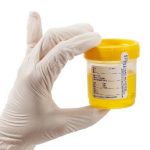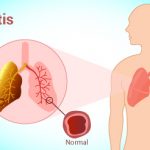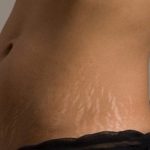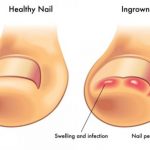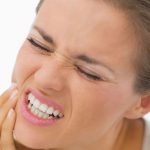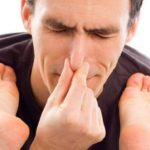A bee sting is a painful and irritating condition in which the stylus like a sting of the honey bee or yellow wasp is pinched into your skin. In this article, we have listed best treatments to treat a bee sting. It is quite painful and can cause a burning sensation for several hours, but it isn’t too seriously most of the time. However, about 1 in 150 children and 1 in 100 adults can trigger serious allergic reactions including the Anaphylactic shock. When a bee bites, its sting is torn off and is left in the skin. It is important to remove the sting to prevent the infection. You can use a scraper to remove the sting. Avoid the use of tweezers, because it can pinch the sting and release more venom.
Causes of a Bee Sting Infection
The main reason of allergy from a bee sting is the protein in its venom. This affects the skin cells and the immune system of the body. If a person is allergic to a bee sting or its venom, then it can cause serious damage to the cells and also weaken the immune system.
Symptoms of a Bee Sting Allergy
Usually, minor symptoms are witnessed at the site of a bee or wasp sting. These symptoms include:
- Pain
- Swelling
- Redness
- Itching
- Inflammation
Symptoms of Anaphylactic Shock:
- Rapid swelling of lips, tongue, throat and around the eyes.
- Difficulty in breathing.
- Hoarseness or wheezing.
- Severe numbness, itching or cramping.
- Dizziness or loss of consciousness.
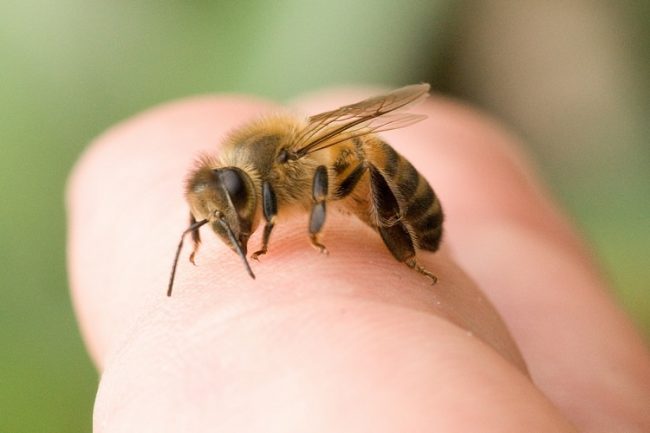
How to Diagnose a Bee Sting Infection?
A number of ways and tests are practiced by the doctors. It is allergy determined by the scale and type of sting. However, a detailed medical history and reports of the symptoms are more important due to the imprecise results of the tests and the body’s sudden change of its allergic state. Some established and accepted symptoms in the present medical practice include:
Skin Prick Test:
A skin prick test is performed by pricking the skin and low doses of different venoms are then introduced into the skin. After which, the level of response is monitored. This is an excellent way of determining the scale of allergy and insect responsible for the allergy.
Blood Test:
A blood test is performed to measure the level of venom-specific antibodies in the blood. This will precise the insect, to which the patient is allergic and the level of infection.
Home Remedies to Treat a Bee Sting Infection
Contents [hide]
- Home Remedies to Treat a Bee Sting Infection
- 1.) Baking Soda, Vinegar and Meat Tenderizer
- 2.) Honey to Treat Bee Sting
- 3.) Aloe Vera Gel to Treat a Bee Sting
- 4.) The ACV Remedy
- 5.) Mud Pack to Treat a Bee Sting
- 6.) Lavender Essential Oil Remedy
- 7.) Calendula to Treat a Bee Sting
- 8.) Cold Compress to Treat a Bee Sting
- 9.) Raw Potato to Cure a Bee Sting
- 10.) Onions Do the Trick
- 11.) Garlic Clove Remedy
- 12.) Cucumber to Treat a Bee Sting
1.) Baking Soda, Vinegar and Meat Tenderizer
This is an effective remedy to treat a bee sting infection. Baking soda has neutralizing properties that dilute the venom, reducing its effects. On the other hand, vinegar gets absorbed into the skin and eases the discomfort and pain. Meat tenderizer has Papain enzyme that breaks down the protein in the venom that is responsible for pain and itching.
DIY-
- Prepare a solution with 1 part of meat neutralizer and 4 parts of water.
- Apply it on the affected area.
- Do not leave it more than 30 minutes on the skin.
- This can cause discomfort.
- Alternatively, you can make a mixture of Meat tenderizer, baking soda, and vinegar.
- Apply the mixture to the affected area.
- Let it stay for 20 minutes, and then rinse off.
- Repeat either of the two remedies hourly to get effective results and treat a bee sting.
2.) Honey to Treat Bee Sting
Honey has natural antibacterial properties and is best known as a natural healer.
DIY-
- Apply honey directly to the affected area.
- Leave it for 10-15 minutes, then rinse it off.
- This will help to treat a bee sting quickly and will also ease the pain.
3.) Aloe Vera Gel to Treat a Bee Sting
Aloe vera gel has inflammatory and antimicrobial properties. These help to cure the infection. It also acts as a coolant and eases the pain.
DIY-
- Pluck a fresh aloe vera leave and scoop out the gel.
- Soak a cotton swab in the gel and dab it on the affected area.
- This will help to treat a bee sting and soothe the pain.
4.) The ACV Remedy
Apple Cider Vinegar has antimicrobial, antibacterial and anti-inflammatory properties. It helps to treat the infection and alleviate the itching caused due to the infection.
DIY-
- Dilute ACV and water in equal quantities.
- Soak a cotton ball in the solution and dab it on the affected area.
- Do not rinse and let the vinegar work on the infection.
5.) Mud Pack to Treat a Bee Sting
It may sound a bit weird, but trust me it is effective. It will help to soothe the area from itching and pain caused due to infection.
DIY-
- Take some mud and mix it with water to make a paste.
- Apply this paste to the affected area.
- Leave it in place until the pain is vanished.
- Repeat this remedy as required.
6.) Lavender Essential Oil Remedy
Lavender oil has coolant properties that soothe the pain and swelling. Also, it helps to neutralize the effect of venom in the body.
DIY-
- Apply the oil directly to the affected area.
- Let the skin absorb the oil completely.
- This will fight infection caused due to the venom.
- Repeat the remedy as required, to treat a bee sting.
7.) Calendula to Treat a Bee Sting
Calendula has antiseptic properties that help to cure the infection and also present from other harmful effects.
DIY-
- You can apply Calendula cream to the affected area.
- Repeat the remedy as required.
- You can also buy Calendula wash from the market.
- Use it as a rinse for the affected area.
- You can also use Calendula herb if available.
- If you have Calendula flowers in your garden,
- Pluck a few of them and wash properly to eliminate the dirt.
- Prepare a paste of flowers mixing with water.
- Apply it to the affected area and leave it to dry.
- Now wash it off.
- Repeat any of the enlisted remedies as required to get effective results.
8.) Cold Compress to Treat a Bee Sting
A Cold compress or ice packs are the best remedy that helps to ease the pain by making the skin numb. It also relieves from inflammation and burning sensations.
DIY-
- Place a cold compress on the affected area for 20 minutes.
- This will give effective results.
- Alternatively, you can place a few ice cubes on a soft handkerchief.
- Place this on the affected area for 15-20 minutes.
- This will also give the same effect.
9.) Raw Potato to Cure a Bee Sting
Potato is alkaline and has detoxifying properties. It helps to soothe the pain and ease the irritation caused due to the infection.
DIY-
- Grate a potato and extract the juice by squeezing it.
- Soak a cotton ball in it and dab on the affected area.
- Press the cotton ball on the area until the pain is vanished.
- Alternatively, you can also cut a fresh slice of raw potato.
- Place it on the affected area until the irritation is eased.
10.) Onions Do the Trick
Onions have natural anti-inflammatory and antioxidant properties in them. It neutralizes the effect of venom in the body and helps to cure the infection. Onion is known as one of the best remedies to treat a bee sting.
DIY-
- Prepare a paste of an onion and apply it on the affected area.
- Alternatively, you can also cut a fresh slice and sprinkle some salt on it.
- Rub it on the affected area.
- This will treat a bee sting quickly and effectively.
11.) Garlic Clove Remedy
Garlic is an effective remedy to treat a bee sting. It is also a readily available ingredient in the house.
DIY-
- Take a garlic clove and pound them coarsely.
- Apply this paste to the affected area.
- Use a bandage to hold it in place.
- Do not remove the bandage until the pain and soreness vanished.
12.) Cucumber to Treat a Bee Sting
Cucumber is known as a natural astringent. It also has coolant properties that help to treat a bee sting and ease the pain.
DIY-
- Cut a fresh slice of cucumber without peeling it off.
- Place it on the affected area for some time.
- Alternatively, you can also use cucumber juice as a toner.
- Apply it to the affected area as it will act as a coolant for your skin.
When to Seek Medical Help?
Serious allergic reaction to a bee sting is very rare, but when it happens, you should immediately seek medical help. The reason why the allergies develop from a bee sting is not yet specified and the allergy is are not apparent when the first time a bee stings a person.
When painful hives develop on the skin and swelling is witnessed, causing circulatory collapse. This is the sign of life-threatening infection.
